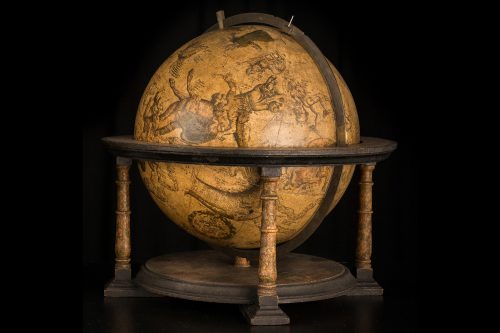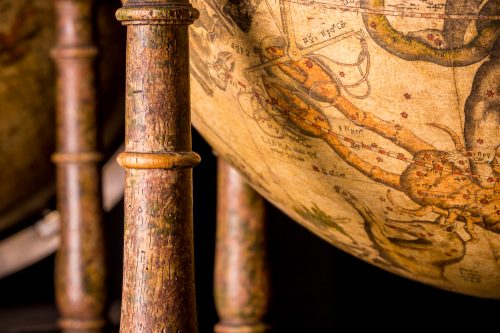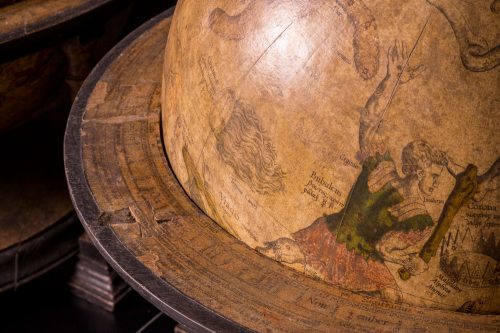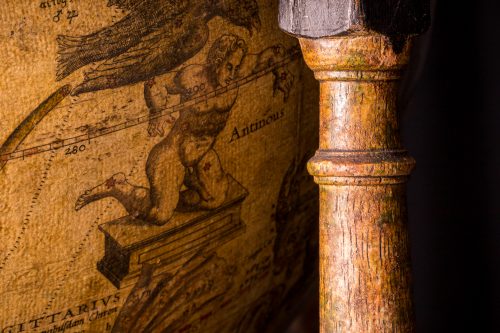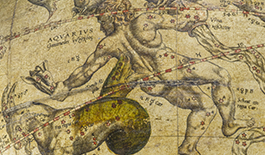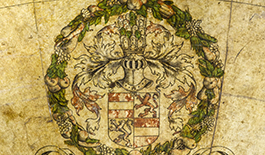THE CELESTIAL GLOBE
In 1551, ten years after producing his terrestrial globe, Mercator created a celestial globe in the same format. At the time it was not unanimously appreciated, no doubt because it was overshadowed by the importance that innovations in geographic representations were gaining during the Age of Discovery.
Innovations of the celestial globe
Mercator’s first and only astronomical work, the celestial globe of 1551 is not as devoid of innovations as many historians and globe experts long believed. Admittedly, the great discoveries of the 16th century had little influence on the prevailing image of the heavens, already well known in Antiquity. But even so, Mercator was able to contribute a number of new features compared with his predecessors. His globe thus represents the state of knowledge at his time, prior to the revelations added by Tycho Brahe, Johannes Kepler and Galileo.
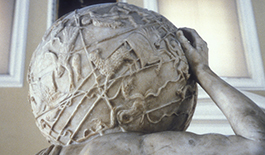
Influences and sources
From the 4th century BC the ancient Greeks represented the celestial vault as a sphere […]
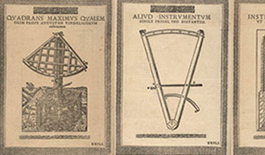
Astronomical coordinates
For centuries, the positions of stars were inspired by Ptolemy. It was only in the late 16th century that Tycho Brahe (1540-1601) would show them more accurately […]
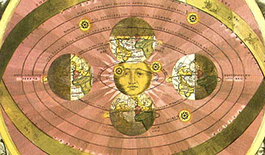
Star positions
Differences showed up between the star catalogues of the 16th century as they were copied and republished, resulting in changes in the stars’ given positions […]
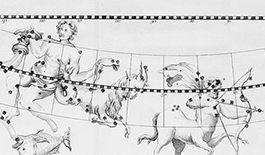
Precession of the equinoxes
Calculating to correct for precession was the biggest astronomical problem faced by users of Ptolemaic star positions. Here again Copernicus had a clear influence on Mercator […]
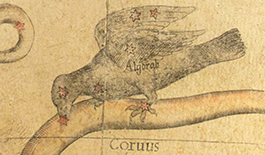
Representation of the constellations
Occasionally the representations of the constellations on Mercator’s celestial globe differ from the standard figures that prevailed at the time […]
Description of the celestial globe
The celestial globe found at the University of Lausanne is remarkably well conserved. Moreover, one cannot help but be struck by its beauty. The visual representation of the constellations is enchanting, plunging the beholder into a cosmography rooted in the world’s oldest myths.
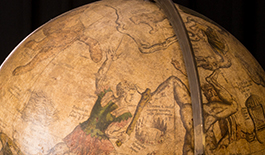
Celestial sphere
The sphere of Mercator’s celestial globe is covered with twelve gores extending to the 70th parallels, with each polar region capped by a round calotte […]
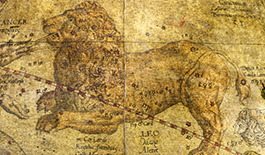
Constellations
In his representation of the constellations and their nomenclature, Mercator produced the most comprehensive celestial globe of the 16th century […]
